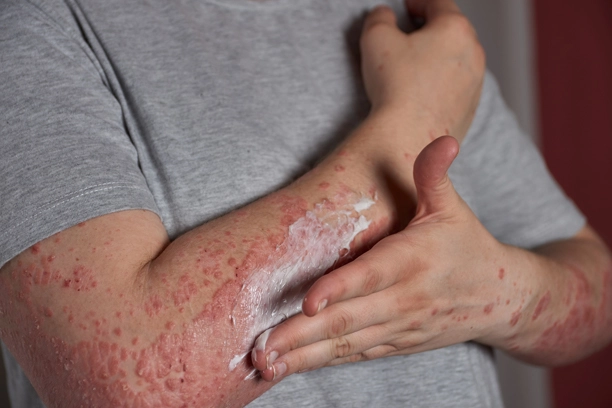What is chickenpox?
Varicella, another name for chickenpox, is characterised by itchy, red blisters that spread throughout the body. This disease is caused by a virus. It frequently affects kids and was so prevalent that it was regarded as a milestone in childhood.
Multiple chickenpox infections are extremely uncommon. Additionally, cases have decreased since the mid-1990s, when the chickenpox vaccine was launched. In this article, you will find a detailed and complete overview of chicken pox.
What are the symptoms of chickenpox?
The most typical symptom of chickenpox is an itchy rash. The rash and other symptoms won’t appear for seven to 21 days after the infection enters your body. Up to 48 hours before the skin rash begins to appear, you become contagious to others around you.
The following list of non-rash symptoms could persist for a few days:
- fever
- headache
- loss of appetite
The typical rash will start to appear one or two days after you first notice these symptoms. Before you get well, the rash passes through three stages. These consist of:
- Your entire body begins to grow red or pink lumps.
- The lumps develop into fluid-leaching blisters.
- The bumps start to crust over, scab over and heal.
The lumps on your body won’t all go through the same stage at once. New pimples will continue to appear as your infection worsens. The rash could be very itchy before it crusts over and develops a scab.
Until all of the blisters on your body have scabbed over, you are still contagious. Eventually, the crusty, scabbed patches slough off. It takes between 7 and 14 days for it to totally vanish.
What causes chickenpox?
The varicella-zoster virus (VZV) is the cause of chickenpox. The majority of infections are brought on by contact with an infected person. Before your blisters develop, the virus is contagious to individuals in your vicinity for one to two days. Up until all blisters have crusted over, VZV is still contagious. Virus transmission routes include:
- saliva
- coughing
- sneezing
- contact with fluid from the blisters
Who is at risk of developing chicken pox?
Risk is lowered by prior active infection with the virus or immunisation. A mother’s immunity to the virus might be passed on to her newborn. From birth, the immunity lasts roughly three months.
The virus can infect someone who hasn’t been exposed to it. Risk rises in any of the following circumstances:
- You recently interacted with a sick person.
- You are younger than 12 years old.
- You are an adult who shares a home with kids.
- You’ve visited a school or daycare centre.
- Your immune system has been damaged by your condition or drugs.
How is chickenpox diagnosed?
Every time you experience an inexplicable rash, especially if it’s followed by cold symptoms or a fever, you should always consult your doctor. You could have one of several viruses or illnesses. If you were exposed to chickenpox while pregnant, tell your doctor straight away.
Based on a physical examination of the blisters on your or your child’s body, your doctor might be able to identify chickenpox. Or, laboratory studies can establish what caused the blisters.
How is chickenpox treated?
The majority of people who are diagnosed with chickenpox are given advice on how to treat their symptoms as they wait for the virus to leave their bodies. Parents will be advised to keep their kids home from daycare and school in order to stop the virus’s spread. Adults who are infected must also remain at home.
To help with itching relief, your doctor may recommend antihistamine drugs or topical ointments, or you may buy them without a prescription. Additionally, you can stop itchy skin by:
- taking lukewarm baths
- applying unscented lotion
- wearing lightweight, soft clothing
If you encounter virus-related issues or are at risk for negative effects, your doctor might recommend antiviral medications. Young people, elderly folks, and those with underlying medical conditions are frequently at greater risk. Chickenpox cannot be cured by these antiviral medications. They lessen the severity of the symptoms by reducing viral activity. Your body’s immune system will be able to recuperate quickly as a result.
How can chickenpox be prevented?
When given the two recommended doses, the chickenpox vaccine prevents the disease in 98% of recipients. When your child is between 12 and 15 months old, they should receive the vaccine. Children receive a booster shot between the ages of 4 and 6.
Adults and older children who haven’t had the vaccine or haven’t been exposed to the disease may get catch-up doses. People who haven’t received the vaccinations may decide to get them later because chickenpox tends to affect older persons with greater severity.
Those who are not eligible for the vaccine can try to avoid the virus by avoiding close contact with those who are sick. But doing so can be challenging. Blisters from chickenpox cannot be recognised until it has been contagious for days.


2 Comments
Pingback: Overview of Chicken Pox – Sujata Birla Hospital
Pingback: Symptoms and Causes of Shingles | Sujata Birla Hospital